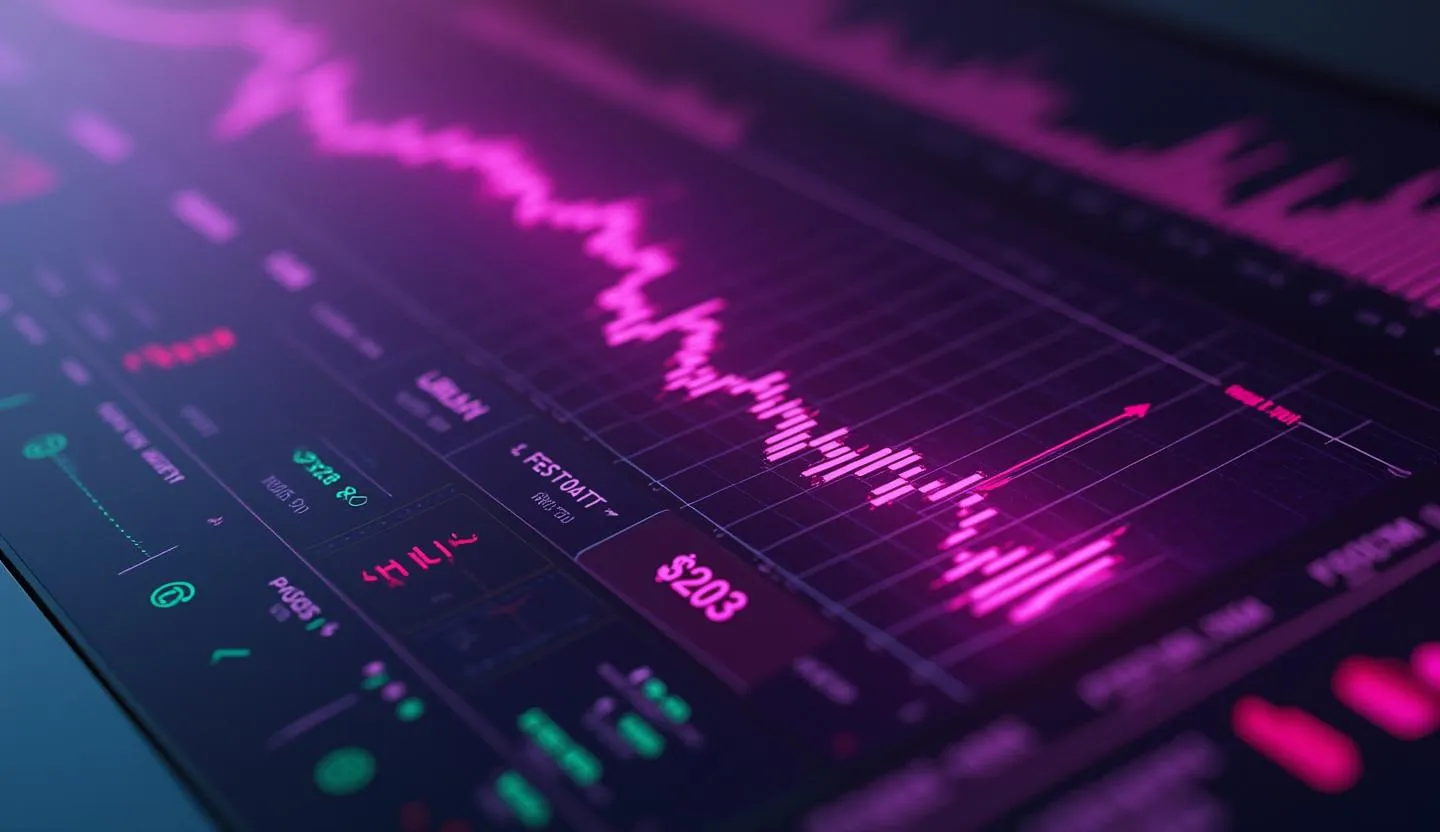Jefferies’ Surprising Shift on Apple: What the Upgrade Really Means for Investors
Apple Inc. (AAPL)—the world’s largest technology company and a dominant force in consumer electronics, software, and digital services—has just received a notable rating adjustment from Jefferies. The firm has upgraded Apple from Underperform to Hold, setting a new price target of $188.32. With Apple’s current stock price hovering near $210 in early July 2025, this move signals a nuanced, if not outright cautious, perspective from one of Wall Street’s more influential research houses.
For investors, analyst upgrades (and downgrades) often serve as critical inflection points. They can catalyze price action, shift sentiment, and—when coming from a reputable firm—offer a window into institutional thinking that shapes the broader market narrative. In Apple’s case, the Jefferies move is a subtle but significant signal: while downside risk has arguably diminished, substantial near-term upside appears constrained.
Key Takeaways:
Potential Upside/Downside: With Jefferies’ new price target of $188.32 and Apple trading at $209.98, the stock is now trading approximately 10% above the target—implying a potential downside risk rather than upside.
Recent Price Action: Apple shares have rebounded from a spring low of $169.21 (April 2025) to their current level, but remain well below the 52-week high of $260.10 (December 2024).
Notable News Flow: Recent commentary underscores both optimism (potential June quarter outperformance) and notable caution—especially around tariffs, China, and future iPhone sales.
Analyst Confidence: Jefferies’ upgrade comes with caveats, highlighting a more balanced risk-reward but not a bullish stance. Their move from Underperform to Hold aligns with Apple’s stabilizing—but not accelerating—fundamentals.
sAnalyst Upgrade: Context and Jefferies’ Influence
Jefferies’ Reputation and the Weight of a Hold
Jefferies is a major U.S. investment bank and research house, known for its deep coverage of technology and consumer sectors. While not the largest Wall Street name, it carries significant influence—especially in tech, where its analysts are followed by institutional portfolio managers. Edison Lee, the analyst behind the call, has a track record of detailed hardware supply-chain coverage, lending credibility to his nuanced view on Apple’s near-term performance.
The shift from Underperform to Hold is not a classic buy signal. Rather, it marks a transition from bearish to neutral, reflecting an assessment that the worst-case downside for Apple has likely passed, but that further upside is limited at current valuations. As the Barron’s headline puts it: “Apple Stock Gets an Upgrade. That Doesn’t Mean It’s Time to Buy.”
“Apple got an upgrade from Jefferies analyst Edison Lee on the potential to outperform expectations for the June quarter but the cheer isn’t expected to last.” — Barron’s
Analyst Alignment with Market Dynamics
This upgrade comes as Apple has clawed back from its April lows. The firm’s Hold rating and target of $188.32—well below the current trading price—suggest Jefferies sees Apple as neither overvalued nor undervalued in the absolute sense, but vulnerable to macro headwinds and sector-specific risks.
Apple’s Stock and Financial Performance: Rebound or Range-Bound?
Recent Price Trajectory
Over the past year, Apple’s stock price has traced a volatile arc:
52-Week Low: $169.21 (April 2025)
52-Week High: $260.10 (December 2024)
Current Price: $209.98 (July 2, 2025)
The stock has rallied 24% off its spring lows, but remains 19% below its 52-week high. This recovery has been accompanied by robust trading volume (averaging over 53 million shares daily), but the advance has stalled near key resistance levels, as shown by recent technical indicators:
20-Day EMA: $202.54
20-Day SMA: $201.30
Upper Bollinger Band: $208.46
Recent RSI: 71.8 (suggests short-term overbought conditions)
Financial Fundamentals and Sector Trends
Apple remains a cash-flow juggernaut, leveraging its ecosystem—iPhone, iPad, Mac, wearables, and services—to generate massive recurring revenue. However, growth rates have slowed in recent quarters. Investors are watching:
iPhone Sales: Still the core revenue driver, but faces maturing demand and competition, especially in China.
Services Segment: Growing steadily, but not enough (yet) to offset hardware plateauing.
Margins and Buybacks: Apple’s capital return program supports EPS, but margin pressure from supply chain and tariffs remains a risk.
Deep Dive: News, Sentiment, and What the Upgrade Signals
Recent News Highlights
Apple has been a lightning rod for both bullish and bearish commentary in the last month:
Barron’s (July 2, 2025): Highlights Jefferies’ upgrade, yet cautions that “the cheer isn’t expected to last.”
The Motley Fool: Notes that Apple remains a core holding for Warren Buffett’s Berkshire Hathaway, reflecting long-term institutional confidence despite short-term volatility.
MarketWatch: Points out Jefferies’ concerns over tariffs and future sales, emphasizing the “stable” but not bullish outlook.
“An Jefferies analyst thinks Apple’s stock could see ‘stable’ performance, but he voices concerns about tariffs and future sales in his latest upgrade to a hold rating.” — MarketWatch
Price Target Implications: Risk vs. Reward
With Jefferies’ price target of $188.32, Apple’s current price ($209.98) trades well above the analyst’s fair value. For current shareholders, this suggests:
Potential Downside: About 10% below the current level, if Jefferies’ target proves prescient.
Limited Near-Term Upside: The market may be “pricing in” a future rebound that’s not yet visible in the fundamentals.
Technical Overextension: The recent RSI and position above Bollinger bands indicate Apple could be due for a near-term pullback.
Risk Factors and Macro Considerations
Sector and Macro Backdrop
The broader technology sector has faced headwinds: tightening monetary policy, global trade frictions, and a rotation away from mega-cap tech into cyclical and value stocks. Apple, as a bellwether, is particularly exposed to:
Tariffs and China Sales: Ongoing U.S.-China trade tensions could impact supply chains and demand.
Regulatory Scrutiny: Both in the U.S. and Europe, antitrust and privacy concerns are mounting.
Hardware Maturation: The iPhone’s global penetration means growth must increasingly come from new categories (AI, wearables, services).
Stock Sentiment and Institutional Positioning
Despite these risks, Apple remains a core holding for institutional investors—Buffett’s Berkshire Hathaway still allocates more than 20% of its massive portfolio to Apple. This provides a long-term floor, but also means the stock’s fate is closely tied to overall market flows.
Conclusion: What Should Investors Make of Jefferies’ Upgrade?
Jefferies’ move is less a green light and more a yellow flag. The firm’s shift to Hold reduces perceived downside but does not signal a compelling buy opportunity at current levels. With the stock trading above Jefferies’ new target, risk is skewed to the downside in the near term, particularly if macro headwinds intensify or Apple’s growth engines stall.
However, Apple’s dominant ecosystem, fortress balance sheet, and sticky user base continue to make it a long-term compounder—especially for those willing to weather episodic volatility. The key: monitor sector rotations, macro developments, and evidence of renewed growth in services or new hardware categories.
Key Watch Points Going Forward:
June Quarter Results: Will Apple outperform and justify current valuations?
China/Trade Developments: Any easing of trade tensions could provide upside.
AI and Ecosystem Expansion: New product launches or AI-driven service growth could reignite enthusiasm.
Final Thought: Jefferies’ upgrade is a reminder that even market darlings face periods of transition. For now, Apple is more a hold than a buy—but its long-term story remains very much alive for those with patience and discipline.

.svg)
.svg)
.svg)
.svg)

.svg)

.svg)
















